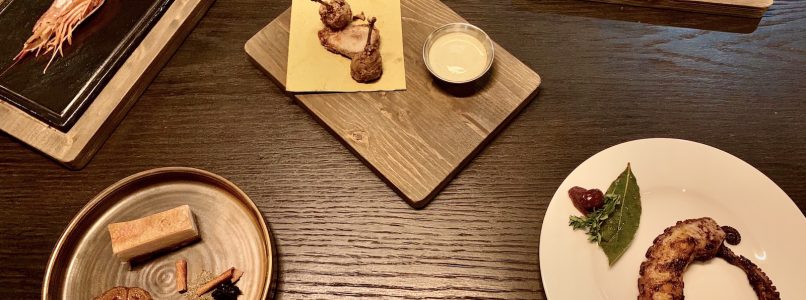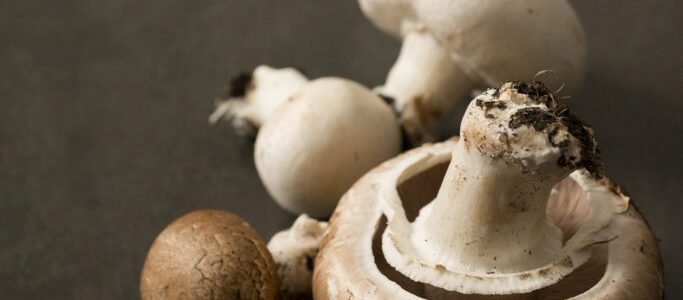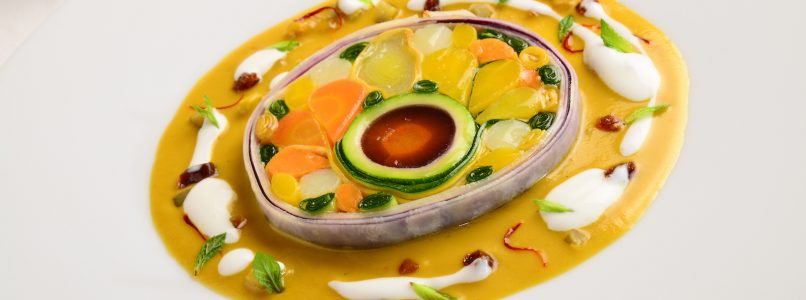The pleasure of giving an extra touch to meat or fish, before cooking. The chef of Al Mercato Steaks & Burgers is a great lover of marinades, with a vision that is not only Italian. Here are five exclusive recipes to try immediately
The international vision has never lacked a Eugenio Roncoroni, a Milanese chef who became famous for creating in Milan, together with his friend Beniamino Nespor, who unfortunately passed away, the concept of the author's hamburger, in a restaurant in via Sant’Eufemia 16, opened in 2011: Al Mercato, which was a gourmet space and a burger bar. The first experiment in Italy of imported street food, bordering on the Michelin Star. Just a decade later, the 38-year-old chef is at the helm of a concept articulated on two locations because At the Steaks & Burgers Market has kept the historic headquarters – totally renovated and in old American style – and opened a second one in Corso Venezia 18, where Tartufi & Friends was up until a few months ago. «Thanks to a passionate entrepreneur like Marcello Rezza, I decided to introduce the real overseas BBQ to show that there is not only the Argentine or Italian grill, he explains.
The "dry massage"
As the sign says, alongside the old love, there are therefore steaks. Which are love anyway, considering the very close Roncoroni's link with the States: Californian mother, sister-in-law (and colleague) from North Carolina, four years lived in San Francisco. Having said that the inspiration to classic American steakhouses has not deprived Roncoroni of the innate pleasure of merging multiple gastronomic cultures (ranging from the foie gras torchon to the cinnamon rose cake passing through the vegetables cooked with kamado, the Japanese charcoal grill), the heart of the offer are the burgers and steaaks. In the second case, the chef's hand is exalted starting from the marinades. One in particular is innovative for Italian clubs: the dry-rub, literally "dry massage " It is a way of flavoring meat if you do not want to grease it excessively or leave it to soak in a liquid. The name derives from the actual massage that allows you to apply this blend, which has a more or less codified recipe, but leaves ample room for personal interpretation.
Beware of experiments
They couldn't help but ask for it secret recipe to Roncoroni, who gave us others four author marinades, not just for meat. With some general advice: «The first time, follow the recipe carefully, especially when there are delicate meats that should never be overwhelmed. Next, you can start the experiments by adding the amount of one element you particularly like or taking away another that doesn't excite you. The correct marinades must be prepared at least 12 hours before, the ideal is in the evening before use so they rest peacefully in the refrigerator. Only those on vegetables can stay at room temperature . The game is fun, it tests the cook's ability to treat the product and enhance its characteristics. "Kitchen purists say that good meat and fish should not be touched in the slightest, for me they can always be improved", underlines Roncoroni. Okay: but the important thing is to marinate (well). Here are the recipes, designed for four people.
Dry marinade – Dry Rub for grilled beef
Ingredients
200 g of sweet paprika, 50 g of black pepper powder, 10 g of cumin powder, 20 g of brown sugar, 50 g of butter, a bunch of aromatic herbs, 4 cloves of poached garlic.
Method
Mix the spices, massage the meat for about 10 minutes and let it rest for about 12 hours in the fridge. Heat in a pan (cast iron if possible) and melt the butter with the garlic and the aromatic bunch. When the butter turns nutty, cook the meat (ideal 200g sirloin steaks) once per side until the desired cooking is achieved. Toss with butter and let the meat rest for about 5 minutes, covered with a sheet of aluminum foil.
Liquid Marinade – Jerk Pork Belly
Ingredients
250 ml of apple cider vinegar, one star anise, two heads of garlic, 50 ml of lime juice, one stick of cinnamon, 100 g of sugar, 150 ml of coconut oil, 20 g of black pepper powder, one white onion.
Method
Mix the ingredients in a bowl and marinate the meat for about 12 hours. The ideal cut is pork belly (to be cut into four strips of about 100 g each, with a thickness of 1.5 cm), but the procedure is also suitable for chicken. Bake at 100 degrees in the marinade for about 3 hours. Let it rest for an hour and cook over high heat, removing any excess marinade from the strips, possibly on a grill or over a direct flame. A pan over high heat can be fine though.
Fermentation Marinade – Kentucky Fried Quail
Ingredients
250 ml of whole yogurt, 10 ml of lemon juice, 100 ml of fresh cream, 20 g of ground pepper, 5 g of salt, 5 g of powdered "masala" curry, 200 g of rice flour, 1, 5 liters of sunflower oil.
Method
With a whisk vigorously mix the yogurt with the cream, pepper, salt, lemon juice and "masala". Marinate the quail legs for 24 hours. Remove the excess marinade and dip the quail into the flour so that it adheres well. Fry at 160 degrees until golden brown and, if necessary, finish cooking in the oven at 200 degrees for 5 minutes.
Semi-liquid marinade – Mediterranean-style octopus
Ingredients
2 bay leaves, 250 ml of white wine, 5 g of fresh thyme, 20 ml of extra virgin olive oil, 5 g of coarse salt, 5 g of black olive pate, 10 ml of lemon juice.
Method
Simmer the octopus (about 1 kg) for almost 3 hours at 70 ° with the white wine and water to cover. Dip in the marinade made by combining all the ingredients, except the lemon juice, and refrigerate for about 12 hours. Cook the octopus over high heat until the outer crust is formed and add the lemon only when cooked.
Liquid Marinade – Bangkok Style Prawns
Ingredients
150 ml of coconut milk, 5 ml of fish sauce, 10 g of sugar, a stick of lemongrass, a fresh chilli, a bunch of coriander, two limes, a red onion, 100 ml of sweet chili sauce , 50 g of roasted peanuts.
Method
Clean sixteen prawns from the central shell (leaving the head and tail), cook the coconut milk for about 15 minutes with the sugar and lemongrass over high heat, combine the other ingredients with the julienned onion and marinate them in the fridge for about 2 hours pouring the hot liquid over the prawns and then covering with cling film. Serve with fresh cilantro, peanuts and lime juice.


